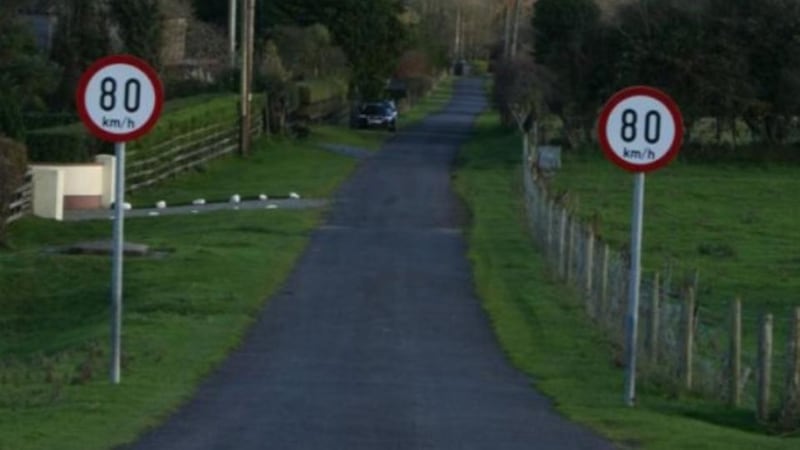Over half of the local authorities who were required to erect a new rural speed limit sign have done so two months after the Department of Transport’s deadline passed.
Some 26 authorities were to replace the 80km/h sign on tertiary roads with a new one displaying diagonal black lines on a white circle by June 12th.
The department said “over half” had completed the work, with the remainder at “various stages of progression”.

“The department is actively working with these local authorities to ensure the task is completed,” a spokeswoman said.
The department wrote to local authorities earlier this year with new guidelines for setting and managing speed limits. The new rural speed limit sign to replace existing 80km/h signs on local tertiary roads was among the measures. All works were to be completed by June 12th.
In March, Minister for Transport Paschal Donohoe said the guidelines for setting speed limits "must make sense" and would involve "an appeals process with independent oversight".
He said the main effect of the guidelines would be to reduce speeds in areas where road users were vulnerable – but he said he did not believe there were “large areas” where road speed limits were too low.
Originally proposed by his predecessor Leo Varadkar in 2013, one of the most visible effects of the guidelines was to be the removal of specific signage, such as the 80km/h signs from rural areas.
Mr Donohoe said a driver’s chosen limit would have to be within the existing 80 km/h maximum, but the change in signage would remove the temptation for drivers to believe it was safe to drive up to the speed limit.
Separately, the Department insisted it was satisfied that the use of the new speed limit sign on rural roads was appropriate for the circumstances in question.
At least one member of the public has complained to the department and to the Road Safety Authority that the sign could be taken by drivers from other countries as a signal that no speed limit at all applies.
The person wrote in April that a “grave error” was being made with the new rural speed limit signs, which are replacing 80km/h signs on tertiary roads where they connect to other roads with a speed limit of 100km/h or greater.
The writer pointed out that the RSA website said the sign was in use internationally under the Vienna signage convention, and meant that drivers must use their own judgment, but must never exceed 80km/h in any case.
“This is incorrect,” the person wrote, insisting the meaning of this sign under the convention was “end of prohibition or restriction”.










